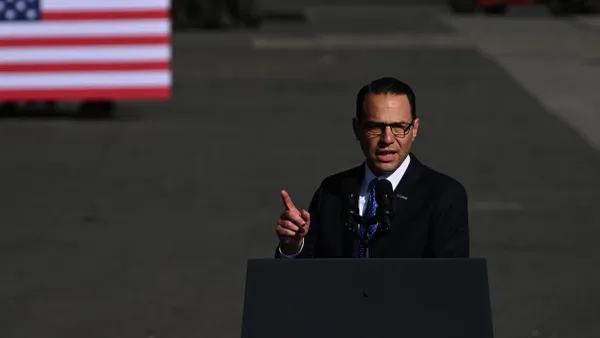Dive Brief:
- Audrey Zibelman, head of the New York Public Service Commission and one of the architects behind the Reforming Energy Vision, will leave her post to oversee the Australian Energy Market Operator on March 20.
- Zibelman helped guide the REV proceeding during its first three years, creating new revenue models and incentives to facilitate deployment of distributed energy resources on the grid and encourage utilities to use them as an alternative to traditional infrastructure upgrades.
- Zibelman's exit will leave three seats vacant on the five-seat commission board unless Gov. Andrew Cuomo moves to appoint replacements before she departs. Commissioner Patricia Acampora is slated to step down at the end of February, according to Politico New York, and the current vacant seat was never filled after former Chair Garry Brown's term expired February 2015.
Dive Insight:
The REV captured the power sector's imagination three years ago as New York embarked on an ambitious route to revamp the utility business model to incentivize utilities to support the growth of distributed energy resources.
A prime example of this is Con Edison's Brooklyn-Queens Neighborhood Program, which seeks to defer a $1.2 billion upgrade in a substation and other grid improvements. Since its approval in 2014, utilities have over a dozen utility pilot programs aimed at facilitating DER deployment and efficiency as a part of the REV docket.
Zibelman's exit coincides with a critical time in the REV process as utilities oversee their pilot projects and prepare for new revenue models designed to align utility profits with energy goals such as reducing demand and avoiding traditional infrastructure upgrades.
The REV docket was not Zibelman's first work in power market design. As chief operating officer of the PJM Interconnection, she helped create the U.S.'s first wholesale electricity market.
Since she arrived in New York, the state's experiment with utility reform since spawned similar efforts in states like Maryland and Massachusetts.
"The more states that take a look at what we’re doing — how do you use more distributed resources better, how do you make it part of the grid — it creates greater market opportunities,” Zibelman told Utility Dive last year.
Zibelman also helped craft the Clean Energy Standard that aims to power the state on 50% renewables by 2030. The CES put subsidies in place to bolster New York's struggling nuclear fleet.
The PSC chair's departure will not affect the commission's ability to make regulatory decisions, a Department of Public Service spokesman said in an email. Though Zibelman and Acampora's exit would leave just two sitting commissioners — Gregg Sayre and Diane Burman — the agency can operate that way until Gov. Cuomo acts to fill the vacancies.
Zibelman's new post will see her administer the Australian Energy Market Operator, which operates the National Electricity Market, the power system in the country's eastern and southeastern seaboard, as well as the Wholesale Electricity Market in Western Australia. The challenges will be considerable, with high rates and abundant sunshine turning the nation into a "proving ground" for rooftop solar and energy storage integration.
In naming Zibelman to the post, the grid operator drew on her experience with the REV docket in New York, saying the initiative "has been internationally recognised for successfully developing and implementing 21st century regulatory reform with a focus on lowering the cost of energy for consumers while building a more resilient and reliable power system."














